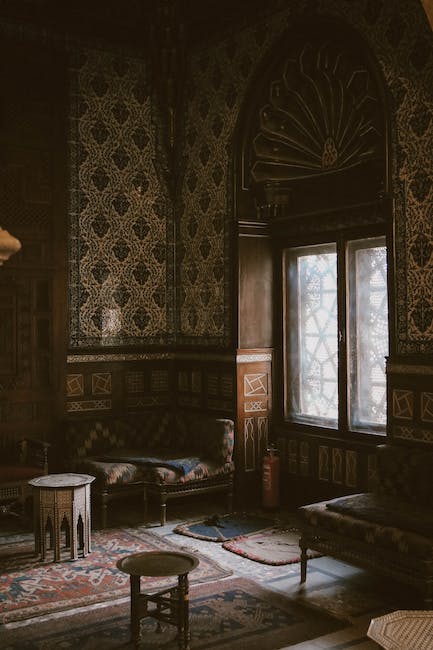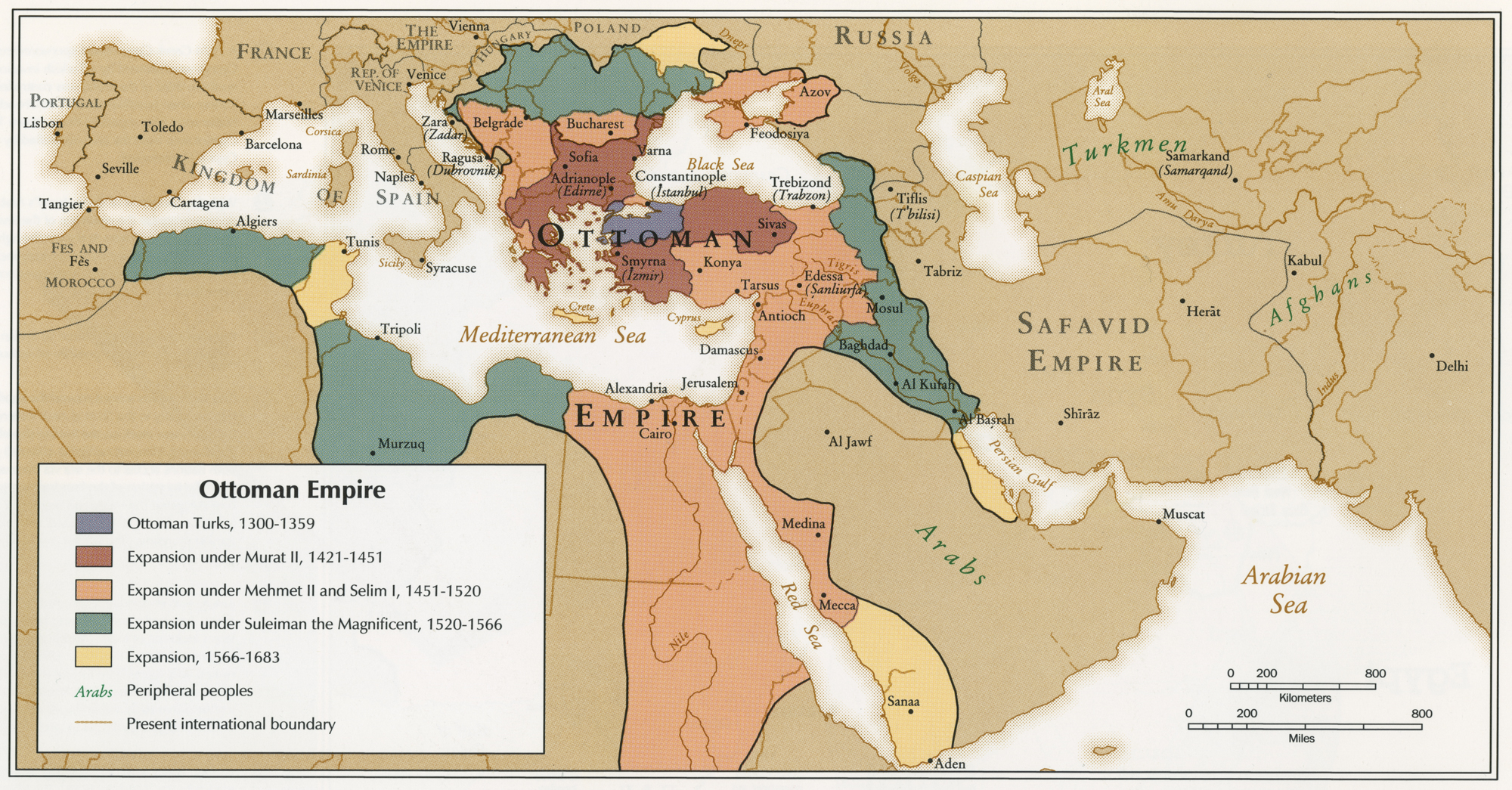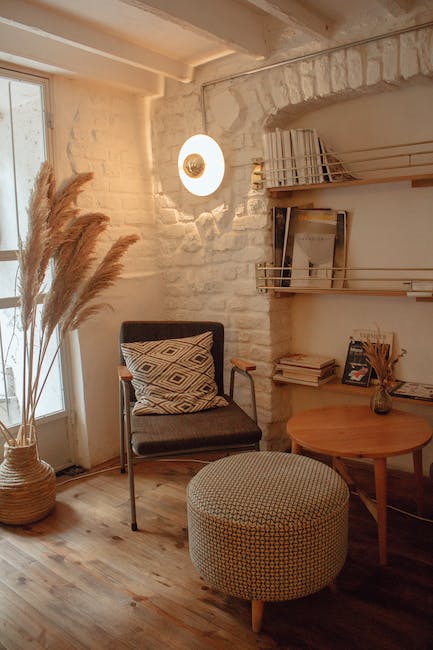Once upon a time, in a land where empires rose and fell like the ebbing tide, a remarkable era emerged, shaping the destiny of a diverse tapestry of people and cultures. This was the Ottoman Era – a time of boundless ambition, unmatched conquests, and a synthesis of awe-inspiring civilizations. From the ashes of an ancient empire, the Ottomans emerged as the new masterminds, leaving an indelible mark on history. Spanning over six centuries, their dominance unfolded a tale of power, innovation, and above all, an enchanting blend of cultures that echoed through the annals of time. Steeped in intrigue and grandeur, this article delves into the heart of the Ottoman Era, unraveling its captivating narrative of conquest and cultural synthesis.
The Ottoman Conquests: Tracing the Expansion of an Empire
The Ottoman Era was marked by a remarkable period of conquest and cultural synthesis, as the empire expanded its territorial boundaries and brought diverse cultures under its rule. Spanning over six centuries, from the 14th to the 20th century, the Ottomans established themselves as a formidable force in the world, leaving a lasting impact on the regions they conquered.
Through a series of military campaigns and strategic alliances, the Ottomans expanded their empire, gradually conquering vast territories in Europe, Asia, and Africa. From the capture of Constantinople in 1453 to the defeat of the Mamluks in 1517, the empire reached its peak under Sultans Mehmed II and Selim I. These conquests not only added to the empire’s dominion but also brought them in contact with diverse cultures and civilizations, leading to a unique process of cultural synthesis.
- The Ottoman Empire embraced religious and ethnic diversity, allowing conquered peoples to retain their own customs and beliefs.
- With each conquest, the empire absorbed aspects of local cultures, incorporating elements of architecture, cuisine, and art into their own distinct Ottoman culture.
- Trade flourished across the empire, enabling the exchange of goods, ideas, and technologies, further enriching the cultural tapestry of the Ottoman Empire.
- The empire also patronized scholars, artists, and intellectuals from various backgrounds, fostering an environment of cross-cultural dialogue and intellectual exchange.
The Ottoman Empire’s expansion was not merely about territorial acquisition, but a process of cultural assimilation and synthesis. This unique amalgamation of diverse traditions and ideas gave rise to a vibrant and cosmopolitan society that left an indelible mark on history.

Cultural Synthesis in the Ottoman Era: Influences, Interactions, and Innovations
The Ottoman Era: A Period of Conquest and Cultural Synthesis
The Ottoman Empire stands as a testament to the remarkable intermingling of diverse cultures, ideas, and artistic expressions that occurred during the Ottoman Era. Spanning over six centuries, the empire’s rich history paralleled its conquests and vast territorial expansions. However, it is not just the military prowess and territorial gains that define this era, but its profound impact on the synthesis of various cultural influences.
As the empire expanded its borders, numerous interactions between different civilizations and societies took place, contributing to a magnificent fusion of cultures. In this unique melting pot, Islamic traditions effortlessly intertwined with elements of Byzantine, Persian, and Arab cultures. The Ottoman Empire splendidly absorbed the artistic and architectural styles it encountered, blending them into its own distinct visual identity. The result was a mesmerizing tapestry of innovation and artistic brilliance.
- Flourishing Arts: Ottoman artists reinvigorated traditional techniques with fresh perspectives, creating masterpieces in calligraphy, miniature painting, ceramics, and textiles.
- Culinary Delights: The empire’s rich culinary tradition embraced a fusion of flavors from the Mediterranean, Persia, the Balkans, and the Middle East, resulting in a vibrant and diverse cuisine.
- Literary Renaissance: Ottoman writers and poets pushed the boundaries of Arabic, Persian, and Turkish literature, creating a unique literary tradition that spanned epic poetry, historical accounts, and philosophical treatises.
- Architectural Marvels: Ottoman architecture showcased a blend of Byzantine, Islamic, and European influences, giving rise to magnificent mosques, palaces, and public buildings that still stand today.
The Ottoman Era stands as a testament to the power of cultural synthesis, illustrating how diverse influences can come together to create something truly extraordinary. Through their conquests, interactions, and innovations, the Ottomans not only expanded their empire but shaped a rich and vibrant heritage that continues to inspire and captivate to this day.

Preserving the Legacy: Recommending Strategies for Heritage Conservation and Promotion during the Ottoman Era
The Ottoman Era, spanning over six centuries, was a captivating period in history that witnessed the expansion of a powerful empire across three continents. While the empire may be best known for its military conquests and political dominance, it also fostered a remarkable cultural synthesis, resulting in a rich and diverse heritage that still resonates today.
Preserving this legacy requires a multifaceted approach that incorporates both conservation and promotion strategies. Firstly, the conservation of Ottoman-era heritage sites is essential to ensure their physical integrity and protect them from natural decay and human interventions. This can be achieved through meticulous restoration work, employing traditional craftsmanship, and utilizing innovative technologies to safeguard these monuments for future generations.

Exploring the Ottoman Empire: Museums, Tours, and Historical Sites to Visit
In the heart of Istanbul lies a rich tapestry of history waiting to be explored: the Ottoman Empire. Spanning over six centuries, this vast empire left an indelible mark on the world through its conquests and cultural synthesis. Today, visitors can immerse themselves in the legacy of the Ottomans by visiting a plethora of museums, taking fascinating tours, and exploring historical sites that provide glimpses into this remarkable era.
- Museums: Delve into the intricate details of Ottoman life and history at the Topkapi Palace Museum. Marvel at the opulent artifacts and imperial treasures housed within its grand walls. At the Istanbul Archaeological Museums, discover ancient artifacts that offer insights into the empire’s early history. Don’t miss the Museum of Turkish and Islamic Arts, which showcases exquisite calligraphy, ceramics, and carpets from the Ottoman era.
- Tours: Embark on a journey through time with a walking tour of the Sultanahmet district, where you can see iconic landmarks such as the Hagia Sophia and the Blue Mosque. For a more in-depth experience, book a guided tour of the Dolmabahce Palace, a magnificent structure that served as the administrative center of the empire. You can also cruise along the Bosphorus Strait on a boat tour, enjoying picturesque views of historic Ottoman mansions and fortresses along the way.
Whether you’re a history enthusiast or simply curious about the past, the Ottoman Empire offers a wealth of opportunities to immerse yourself in its fascinating legacy. From museums filled with treasures to captivating tours and awe-inspiring historical sites, this era of conquest and cultural synthesis continues to captivate and enchant visitors from around the globe.
Final Thoughts
As we conclude our journey through the vast and vibrant tapestry of the Ottoman Era, we are left in awe of its undeniable legacy. This era, with its towering figures and tumultuous conquests, has propelled us into a world where history and culture intertwine with an elegance seldom seen before.
The Ottoman Empire, a force that once stretched from the heart of Europe to the far corners of Arabia, cements its place in the annals of human history as a period of conquest and cultural synthesis. It stood as a bridge between East and West, an empire that transcended geographical boundaries to embrace a multitude of cultures, languages, and religions.
Under the watchful gaze of great sultans, from Mehmed the Conqueror to Suleiman the Magnificent, the empire reached its zenith, leaving an indelible mark on countless lands and peoples. The fearless armies, armed with ambition and unrivaled military strategies, swept across regions, reshaping territorial landscapes and forever altering the destinies of nations.
But it was not just the tales of conquest that defined this era. The Ottoman Empire was also a melting pot of diverse cultures and beliefs, fostering an environment of cultural synthesis that continues to captivate historians and researchers alike. It was a place where Western and Eastern influences converged, birthing a distinctive Ottoman heritage in art, architecture, music, and cuisine.
In the grand palaces of Istanbul, adorned with mesmerizing mosaics and intricate calligraphy, artistry thrived. Poets, scholars, and artisans found solace in their craft, creating masterpieces that whispered tales of opulence, love, and devotion. The mosques, with their graceful domes and slender minarets, stood as symbols of unity, providing solace to the faithful and hosting intellectual discourse.
It is through the Ottoman Era that we are reminded of the timeless truth that civilizations are bound to rise and fall. However, in its wake, the Ottoman Empire has left a lasting imprint on the hearts and minds of those who delve into its story. It serves as a reminder that conquest and cultural synthesis are not mutually exclusive; instead, they can intertwine, unfolding a tale of stunning breadth and depth.
So let us bid farewell to this captivating chapter of history, richer in knowledge and understanding of a time that defied conventional boundaries. The Ottoman Era stands as a testament to the human capacity for creation, conquest, and compassionate coexistence. May we continue to draw inspiration from its spirit, cherishing the lessons learned and nurturing the cultural synthesis that dwells within our own era.

